VICIOUS CYCLE
Hell on a bike – what it’s really like cycling from Langa to Cape Town
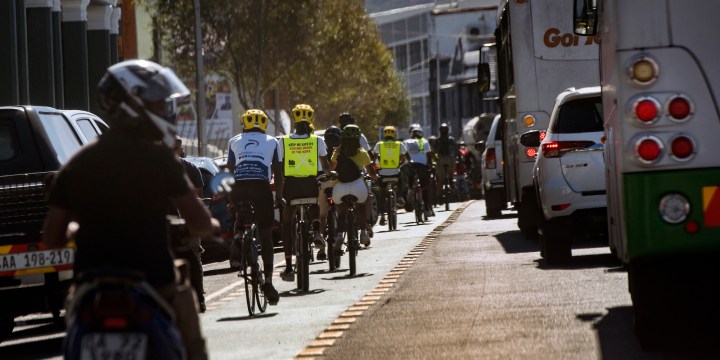
A group experiment to ride from Langa into Cape Town’s CBD proved a scary affair, with nonexistent or neglected lanes and selfish vehicle drivers endangering cyclists’ lives. Daily Maverick reporter Velani Ludidi hopped on a bike to test it out himself.
Daily Maverick recently joined the Active Mobility Forum’s cycling initiative to ride from Langa to the Cape Town CBD to highlight the need for infrastructure that enables safe cycling and an inclusive transport system across the city.
Langa, the oldest township in the Western Cape, is the closest to the CBD at 13km, but it took 14.3km to cycle there because the route passed through Athlone, Rondebosch and Woodstock instead of straight via the N2.
Given its proximity to the CBD, cycling was and is still the norm for many Langa residents, who cannot afford to rent or buy houses in well-located neighbourhoods close to jobs and other opportunities.
There is a bike culture in the area because takeaways and groceries are delivered to residents by bicycle riders. Whereas many people might view cycling as a recreational sport for the privileged, around Langa bicycles have been moving people around for ages, whether it is to report to work or visit friends and family.
But cycling to the CBD comes with risks: there is no infrastructure for cycling and cyclists are forced to share the road with vehicle drivers who are sometimes not mindful of manual two-wheeled road users.
Non-existent network
All the other townships in Cape Town face the same challenges.
Mzikhona Mgedle, founder and director of the Langa Bicycle Hub, said the organisation was advocating for bicycles to be a mode of non-motorised transport for short trips around informal communities like Langa by working with the City of Cape Town to improve cycling and walking infrastructure, and creating safer spaces for children and women to ride and learn about road cycling safety.
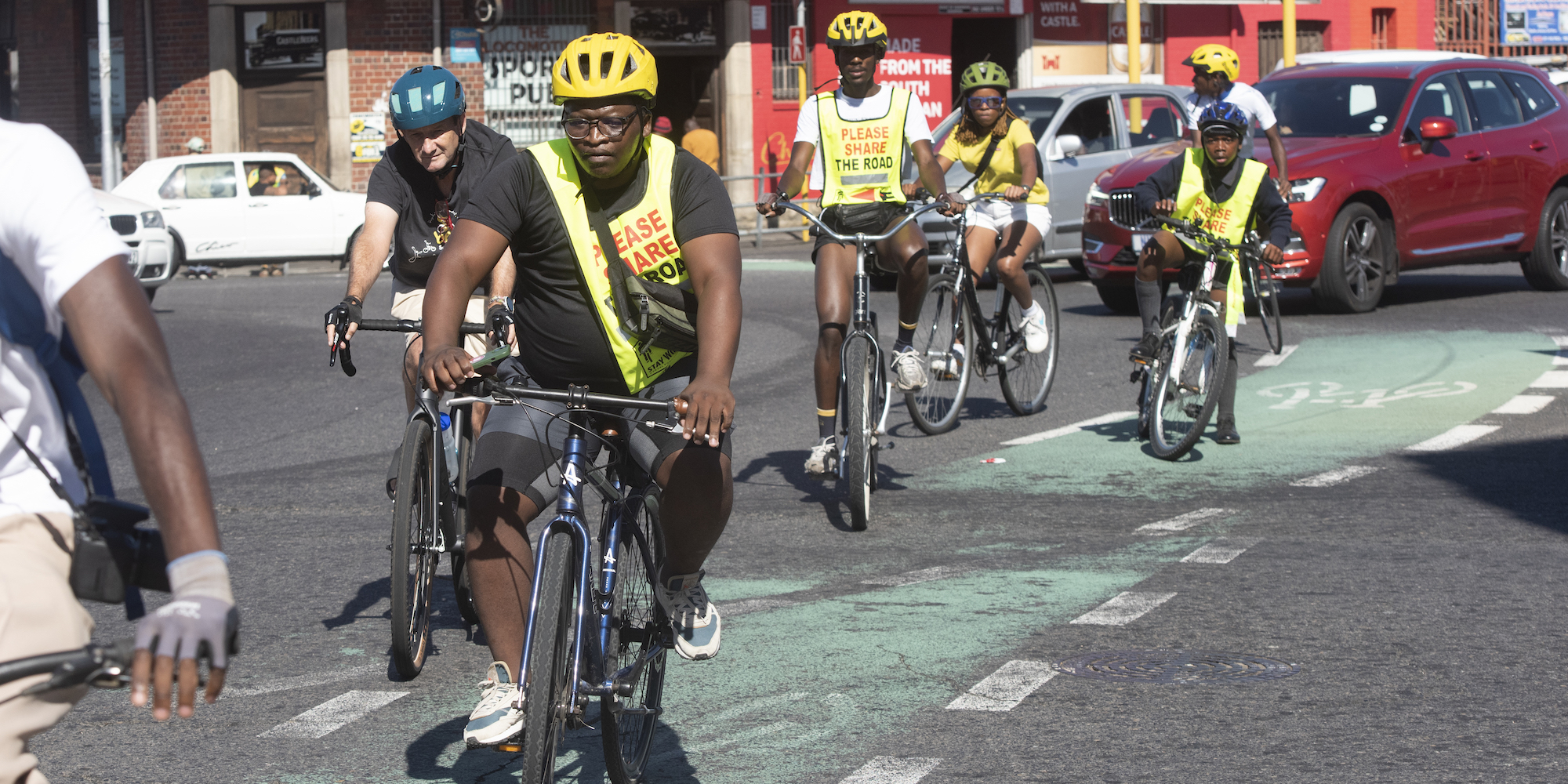
Velani Ludidi , Daily Maverick reporter negotiates with other riders Salt River’s busy traffic circle. 24.02.2023. Photo Brenton Geach
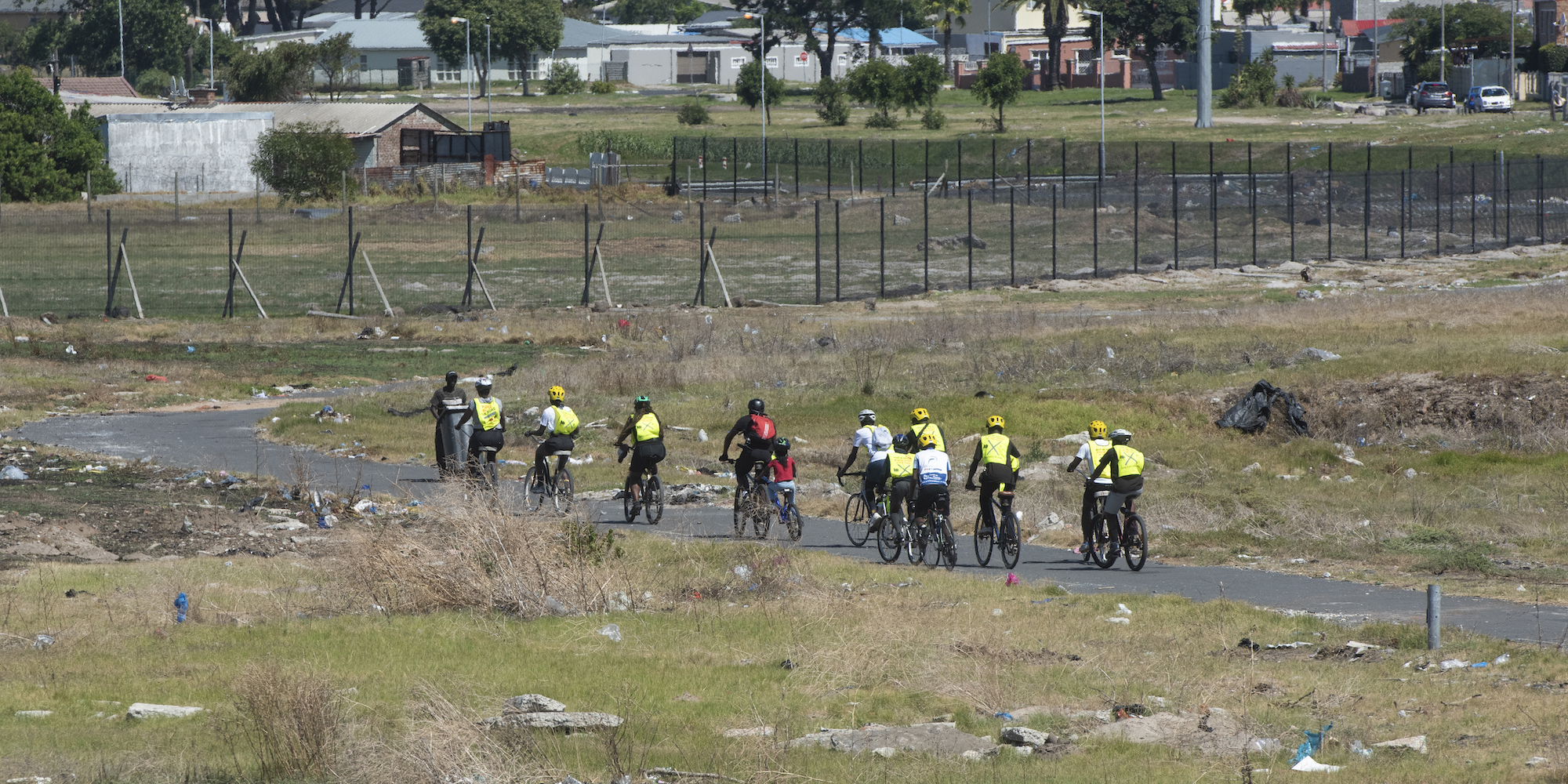
Cyclists after crossing the N2 from Langa enter Bridgetown in Athlone. 24.02.2023. Photo Brenton Geach
“We need to support the growing numbers of people commuting with bicycles from around informal communities and how we can provide cycling education awareness. Many people are commuting on longer trips from Langa to Cape Town and others leave Langa going to Bellville with bicycles every day … to get to work and school. These people link their commuter cycling trips on freeways and need educational cycling tips to navigate routes.”
The unreliability of transportation in Cape Town and other South African cities persists owing to continuous government failure to break apartheid spatial planning as well as the destruction of the rail system, making it almost impossible to walk or cycle safely. Current infrastructure prioritises vehicles, despite the obvious benefits of connected cycling lanes.
The route from Langa – CBD. Click on the cycles for specifics along the route. Compiled by Velani Ludidi.
Unsafe passage
The journey to the CBD started at the Langa Indoor Sports Centre on Bhunga Avenue. From the get-go, there were no safe cycling lanes in Langa. The cyclists could not use the N2 because it is illegal to do so; the route then led to Athlone.
There is a bike path approaching Athlone, but it is not maintained — there was broken glass everywhere and the urban waterway is dirty and polluted. The small sections of bicycle lanes end abruptly further into Athlone. The whole route from Athlone Stadium to the Liesbeek Parkway is unsafe with no protective barrier.
Then a minibus taxi wanting to pick up commuters made a stop inside the yellow line used by the cyclists. We had to brake hard to avoid hitting the taxi, and the driver did not acknowledge us at all.
There were many encounters that could have resulted in either injury or even death to the cyclists because there are no barriers protecting them from vehicles on the road. The first safe cycling lane was eventually found at the Liesbeek Parkway, but it is the only safe spot.
As the route entered Woodstock, cyclists were faced with the challenge of vehicles driving inside the painted bicycle lanes. Into the CBD, the Bree Street cycle lane, which was piloted in 2010, is unsafe as it has no barricades to protect cyclists and a plethora of cars park in it.
Professor Marianne Vanderschuren, an expert on public and non-motorised transport at the University of Cape Town, said studies conducted in Cape Town showed that cycling infrastructure did not yield an increase in their use or an improvement in road safety. “At the moment we are not doing it in a way that is conducive to cycling,” she said, pointing out that a network should connect all parts of the city to the CBD.
She added that studies had shown that a second-hand bicycle could be bought with the equivalent of two months’ minibus taxi fares to get to work, “but that requires the City to provide the infrastructure to keep cyclists safe. And that’s not happening.”
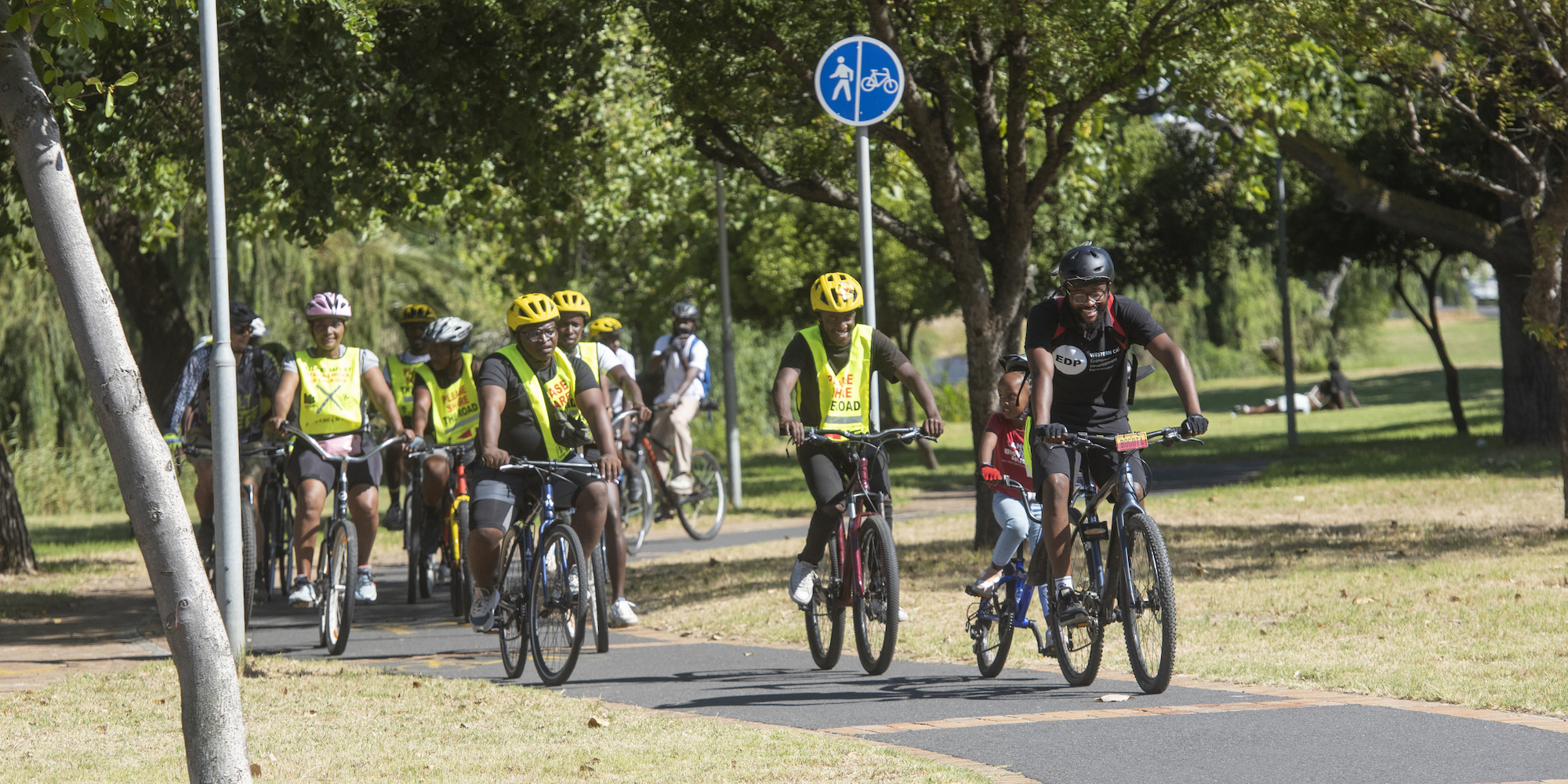
Mzikhona Mgedle leads the cyclists along the cycle path at Liesbeek near Hartleyvale stadium. 24.02.2023. Photo Brenton Geach
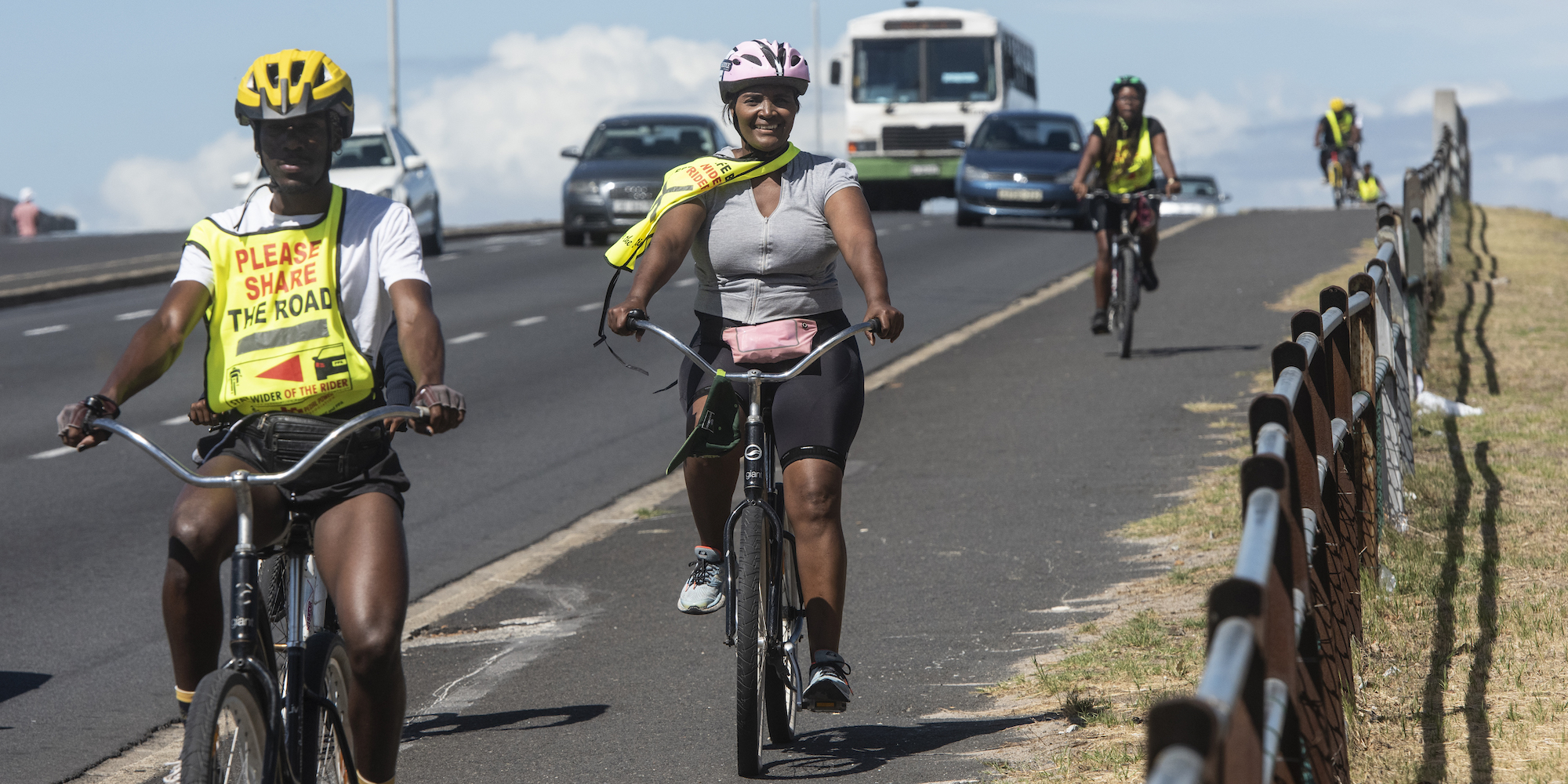
Cyclists enjoying the down hill ride along Klipfontein road bridge in Athlone. 24.02.2023. Photo Brenton Geach
According to Cape Town Mayor Geordin Hill-Lewis, public transport is an important part of the metro’s ambitions for Cape Town and cycling is part of that. “This is why we are looking to reform policies and install infrastructure that will create an environment in which cycling becomes an easy mode of transport to choose for Capetonians who wish to do so,” he said.
Ricardo Mackenzie, the newly elected MEC for Mobility in the Western Cape, joined the cyclists in the CBD and pledged to work together with Hill-Lewis to make cycling safer.
“We have tens of thousands of cyclists in the city and if they feel that it is unsafe for them on the roads, we have to do something about that, not only in the metro but in the rest of the province.” DM168
This story first appeared in our weekly Daily Maverick 168 newspaper, which is available countrywide for R25.
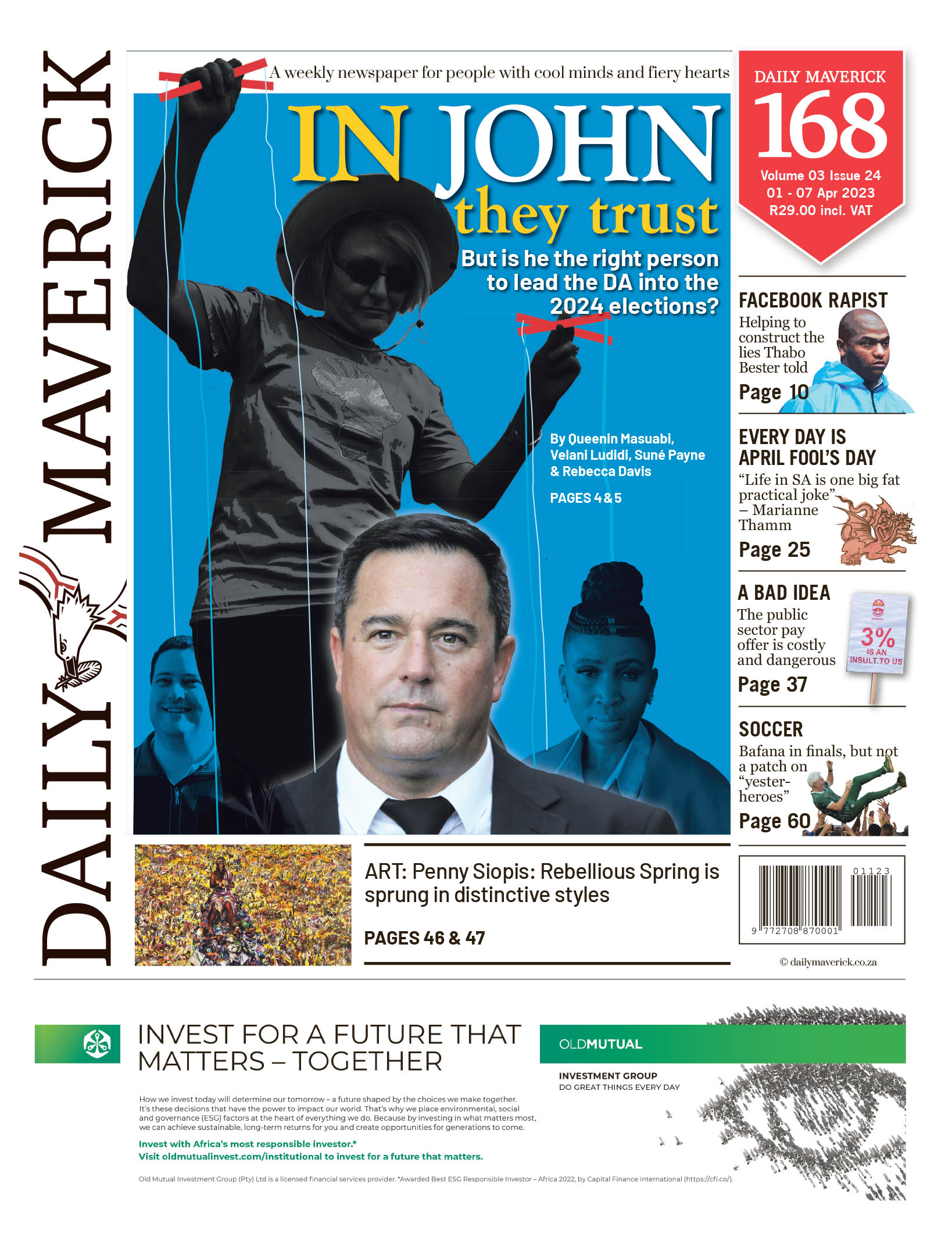



















 Become an Insider
Become an Insider
The real shame is that I can cycle from Century City to the Waterfront with the majority of it on dedicated cycle routes. Why does this city have its priorities so backwards?
City is doing the bare minimum to enable this. The bicycle lanes in rondebosch=> Woodstock only use what was available, and they are practically useless to ride on as just too disjointed. In salt river/Woodstock they might as well not be there as traffic ignores it 100%. It then seems that people don’t want to use bike lanes. Do it properly and they will get used.
Thank you for highlighting the difficulties in commuting by bycicle in Cape Town. I am currently recovering from an ankle and tibia surgery which was a direct cause of a bycicle accident which could have been much worse. A parked taxi moved into the middle of the road without indicating and in trying to avoid the crash my bicycle hit a pothole and I was thrown out onto the tarmac. I have been commuting about 30km daily between the Cape Flats and the CBD for the last 4 years, this is my first serious accident but there have been way too many close calls. Not only with taxis but with Golden Rail buses and other vehicles. There is very little respect for cyclists on the road, very few people look on their left mirrors before making a turn or parking and they act as if bycicles are just a nuisance, very often not leaving enough space on the road for cyclists. It should be the opposite, drivers should be even more careful with cyclists and respect the fact that not only we are aleviating traffic on the roads but cycling is also a much more sustainable mode of transport. But we are more vulnerable to badly maintained roads, obstacles and careless, irresponsible drivers. The city needs to first start looking at the bad condition of the cycling lanes and also at designing these in a smarter way. Case in point: Adderley street, it’s almost impossible to cycle safely on the dedicated cycling lane since it’s constantly taken over by pedestrians. Let’s not even talk about Salt River…
Cyclists in the Helderberg Basin risk their lives cycling to and from work. It’s the same in Johannesburg. We absolutely need the infrastructure – Paris did it fast with Covid – but until drivers start obeying traffic rules, it will be dangerous out there. I walk a lot and every time I have to cross at a traffic light, at least one car jumps the red light. If you are cycling and see it turn green, and go, you are done for. Infrastructure, traffic police and massive fines/ prosecution for aggressive drivers. Let’s dream.
Excellent article! I’m sure there are many people (including me) who would like to commute by bike but who don’t feel safe cycling on our roads. It’s easy to blame taxis and other drivers but the fact is our roads are just not designed to be safely shared by bikes as well as motor vehicles. The city has already done great work building dedicated lanes for the MyCiti buses. Perhaps the next logical step is to build dedicated bike lanes to keep cyclists safe from other traffic. Cycling must be seen as a big part of this city’s transport plans. Its non-polluting commuting!
I fully agree with the article and that roads should be made safer and more user friendly for cyclists.
especially people that commute in this way every day. But cyclists, especially the into-my bike-guys are accountable for many accidents themselves and create their own very bad PR.
When traveling on public roads the rules, not only the rights, have to be followed by every one.
Traffic lights are not only for motorists, cyclists cannot ride next to each other and need to take motorists into consideration. they too have to indicate their planned actions. they too do not own the roads.
Nobody wants to hit a cyclist when driving, nor does anybody want to be put in a dangerous situation by a cyclist. I was forced into a ditch by cyclists who, unaware of my approach, suddenly decided to pass one another, without indicating. If I did not veer to the right very sharply it would have been a fatal accident. It turned out badly for me.
The worst was that they looked back and saw my predicament, but did not stop. They merrily cycled away – four deep across the road. I did not get very hurt, but had expensive damage to my car and have lost my patience for cyclists all together.
When you do hoot to warn them of your approach they are, more often than not, quite aggressive and rude.
The self obsessed lycra backsides are not as special as they seem to think. Roads are not playgrounds, but potentially dangerous areas for everybody – cyclists, motorists, truck drivers and pedestrians.
Sadly we have the ‘entitled’ cyclist in their lycra ruining it for all others. Then we have the ‘struggling’ cyclist who needs to get from A to B just to survive. Let’s rather assume the latter & keep everyone safe. Karma may ditch the self obsessed eventually.
Interesting article and there is no doubt that more cyclepaths are necessary across the city (and all over the country), preferably dedicated or well insulated from vehicle traffic. But two observations:
First, as a cyclist and mv driver myself, I am astonished at the aggressive attitude of some cyclists, usually on expensive bikes, to mv drivers who understandably object to their practice of riding abreast on busy roads. One would think that most of those cyclists also drive mvs and understand the frustration it causes.
Second, Cape Town is a windy and hilly city and wet in winter. I do not believe it is well suited to commuting by bicycle (other than e-bike, which most cannot afford). So to my mind, inserting dedicated bike lanes on a major mv commuting route, may be a doubtful prioritisation.